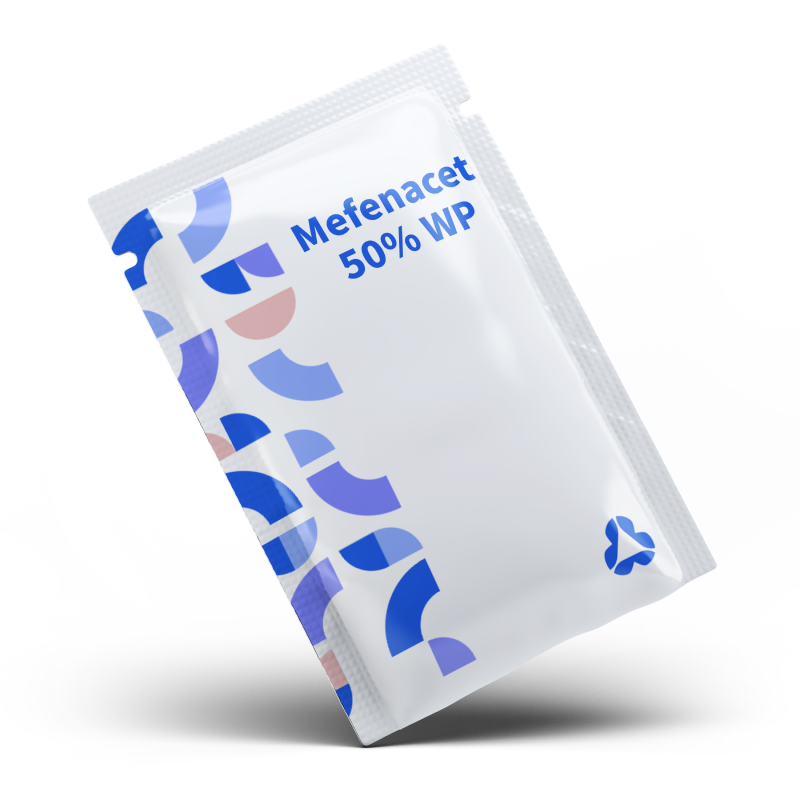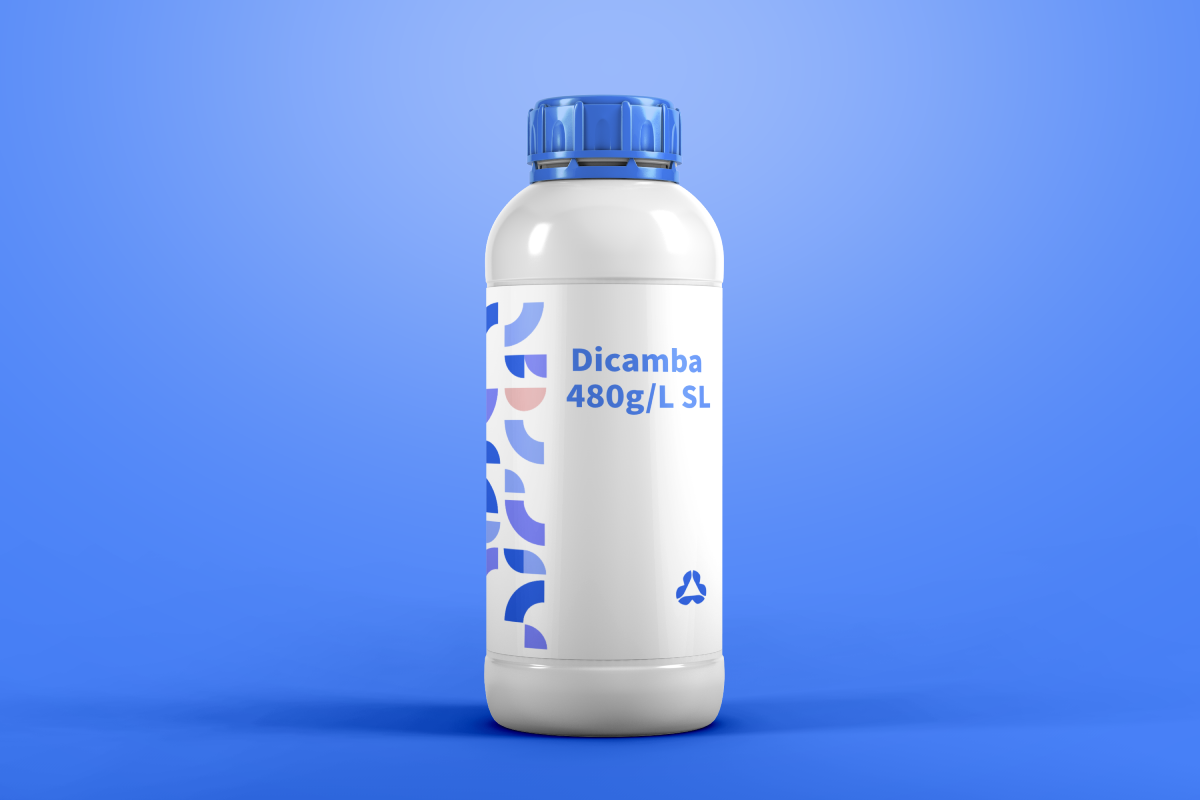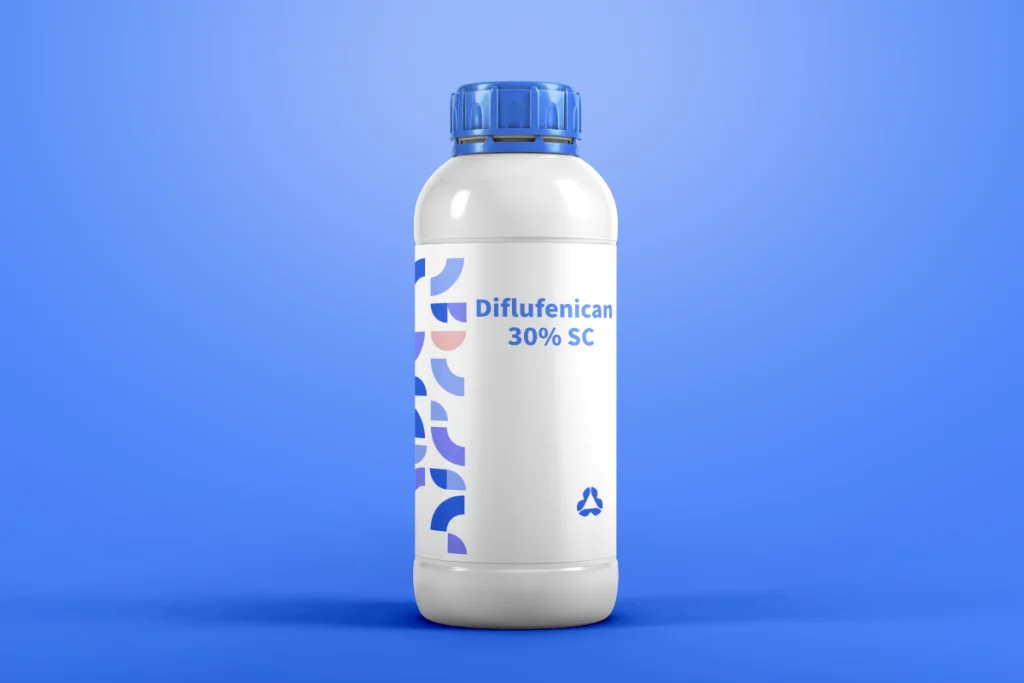Active Ingredient & Chemical Properties
- Chemical Name: Dicamba (3,6-Dichloro-2-methoxybenzoic acid)
- Molecular Formula: C₈H₆Cl₂O₃
- Formulation Type: Soluble Liquid (SL)
- Physical Properties: Clear to light brown liquid, soluble in water (2.4 g/L at 25°C), pH 5.5–7.0, density 1.05–1.10 g/cm³.
Mode of Action
- Foliar & Root Uptake:
-
- Absorbed by leaves via stomata and by roots, translocated through xylem and phloem to meristematic tissues.
- Auxin-Mimicking Activity:
-
- Disrupts cell division and elongation, causing abnormal growth (twisted stems, cupped leaves, stunted roots).
- Symptom Progression:
-
- 2–3 days: Leaf curling and chlorosis
-
- 5–7 days: Stem brittleness and vascular collapse
-
- 7–14 days: Complete weed necrosis
Target Crops & Weeds
|
Crop
|
Controlled Weeds
|
|
Wheat/Barley
|
Lamb’s-quarters, pigweed, wild mustard
|
|
Pastures
|
Dandelion, dock, buttercup
|
|
Non-Crop Areas
|
Thistle, poison ivy, kudzu
|
|
Transgenic Crops
|
Dicamba-tolerant soybeans, cotton (e.g., Xtend® systems)
|
Dosage & Application Guide
Crop-Specific Recommendations
|
Crop
|
Dosage (g ai/ha)
|
Application Timing
|
Method & Tips
|
|
Winter Wheat
|
120–180 (250–375 mL 480g/L SL)
|
2–4 leaf stage of weeds (post-emergent)
|
Spray with 200–300 L water/ha; add 0.25% v/v non-ionic surfactant for dry conditions.
|
|
Pastures
|
150–240 (312–500 mL 480g/L SL)
|
Early bloom stage of weeds (spring/summer)
|
Spot-treatment or broadcast; avoid spraying on legume-dominant pastures.
|
|
Dicamba-Tolerant Soybeans
|
90–150 (187–312 mL 480g/L SL)
|
Weeds at 2–4 leaf stage (post-emergent)
|
Use with drift-reducing nozzles; apply when wind speed < 16 km/h.
|
|
Non-Crop Areas
|
240–360 (500–750 mL 480g/L SL)
|
Active weed growth (spring–autumn)
|
Mix with glyphosate for perennial weed control; wear PPE during application.
|
Key Application Practices
Use low-pressure nozzles (20–40 PSI) and avoid application in wind speeds > 10 km/h to prevent off-target damage to sensitive crops (e.g., vegetables, grapes).
-
- With glyphosate for non-selective control in fallow fields
-
- With 2,4-D for enhanced broadleaf suppression in cereals
Maintain spray solution pH 5.5–7.0 to prevent herbicide degradation; add buffering agents if necessary.
SEO-Optimized Key Features
- Broad-Spectrum Efficacy:
Controls 100+ broadleaf species, including resistant biotypes (e.g., Palmer amaranth).
- Systemic & Rapid Action:
Visible symptoms within 48 hours; translocates to roots for perennial weed kill.
- Transgenic Crop Compatibility:
Safe for use in dicamba-tolerant (Xtend®) soybeans and cotton, expanding application flexibility.
- Low Residue Profile:
Soil half-life 1–7 days (aerobic conditions), allowing early rotation to sensitive crops.
- Cost-Effective:
Low application rates (90–360 g ai/ha) reduce input costs while maintaining high weed control efficiency.
Safety & Environmental Notes
-
- Low mammalian toxicity (LD₅₀ > 2000 mg/kg rat); moderate risk to fish (LC₅₀ 1–10 mg/L).
- Environmental Precautions:
-
- Maintain 100 m buffer from water bodies; avoid spraying over wetlands.
-
- Drift can damage non-target broadleaf plants (e.g., trees, gardens).
-
- Wait 30 days before planting sensitive crops (e.g., beets, spinach); safe for cereals after 14 days.
Store at 5–30°C, away from food/feed; keep containers sealed to prevent evaporation.
Packaging & Compliance
- Standard Packs: 1L, 5L, 20L HDPE containers with UV-protective labels.
-
- Registered in USA (EPA), Canada, EU, and major cropping regions.
- Shelf Life: 3 years under recommended storage conditions.
SEO-Focused FAQ
- What weeds does Dicamba 480g/L SL control?
Effective against broadleaf weeds like lamb’s-quarters, dandelion, thistle, and amaranth.
- Can it be used in soybeans?
Yes, in dicamba-tolerant (Xtend®) varieties; avoid in conventional soybeans due to phytotoxicity risk.
- What is the pre-harvest interval (PHI)?
-
- Pastures: No PHI (non-food use)
- How to manage drift during application?
Use drift-reducing nozzles, apply at low wind speeds, and maintain buffer zones from sensitive areas.
- Is Dicamba 480g/L SL compatible with other herbicides?
Yes, but jar-test first; common mixes include glyphosate, 2,4-D, and metribuzin.
Field Performance Data
- Soybean Trials in the US Midwest:
120 g ai/ha + drift agent controlled 95% of Palmer amaranth, increasing yield by 1.5 t/ha.
- Wheat Trials in Australia:
180 g ai/ha suppressed lamb’s-quarters by 92%, improving grain quality and protein content.
Residue Limits
|
Crop
|
MRL (mg/kg)
|
Regulatory Region
|
|
Wheat/Barley
|
0.05
|
EU, Codex Alimentarius
|
|
Soybeans
|
0.1
|
EPA, Canada
|
|
Pastures
|
N/A
|
Non-food use
|
For detailed application guides or regional regulatory support, contact our agricultural specialists for tailored recommendations.




